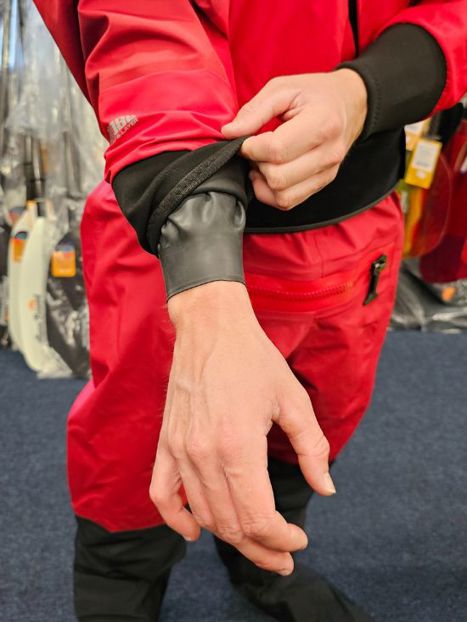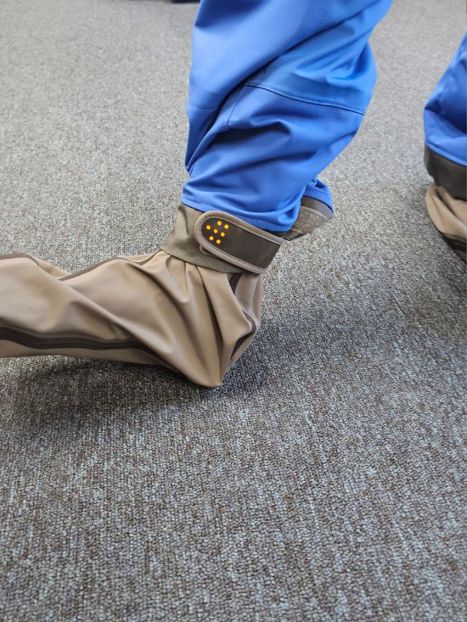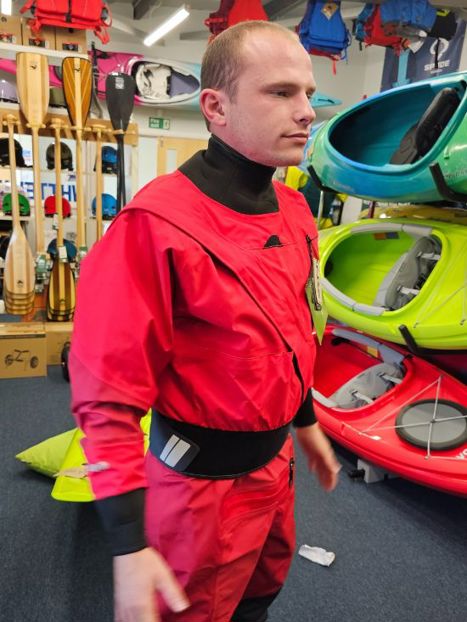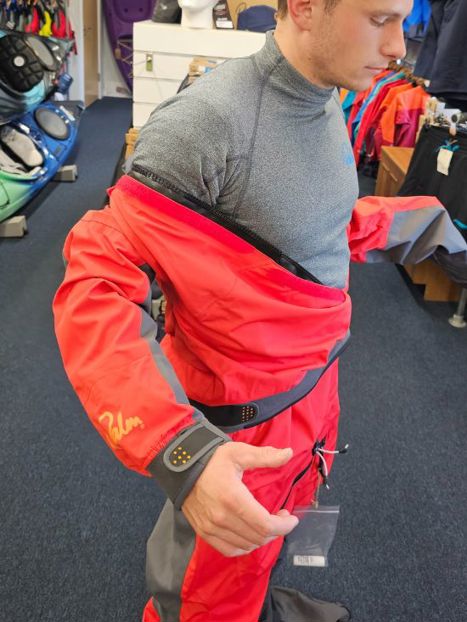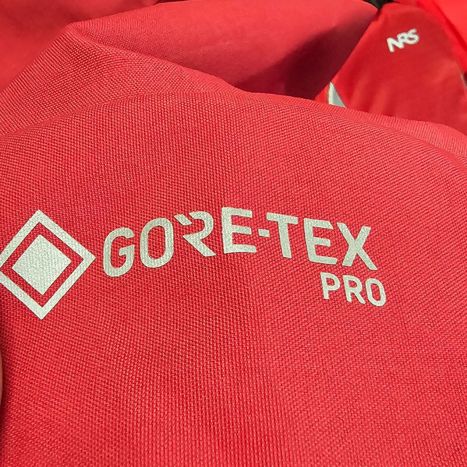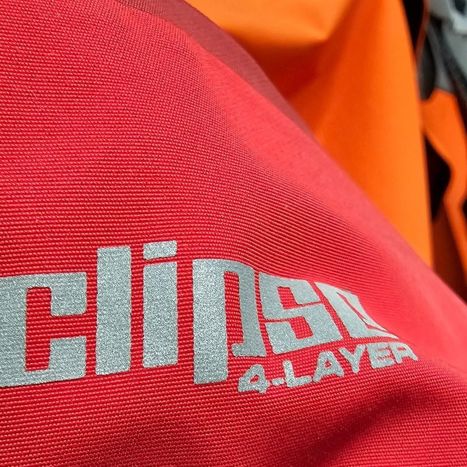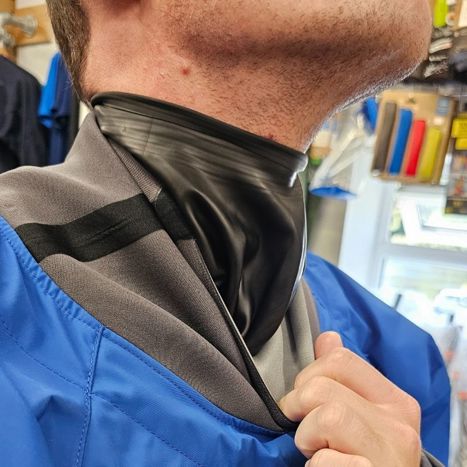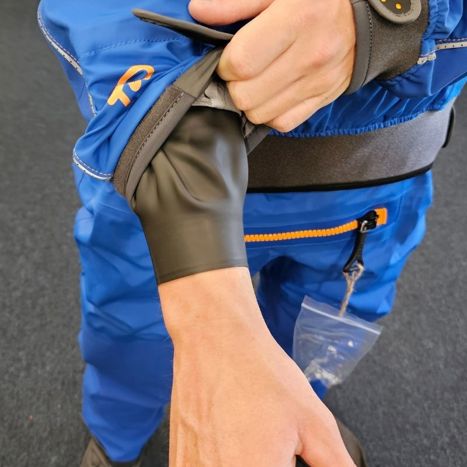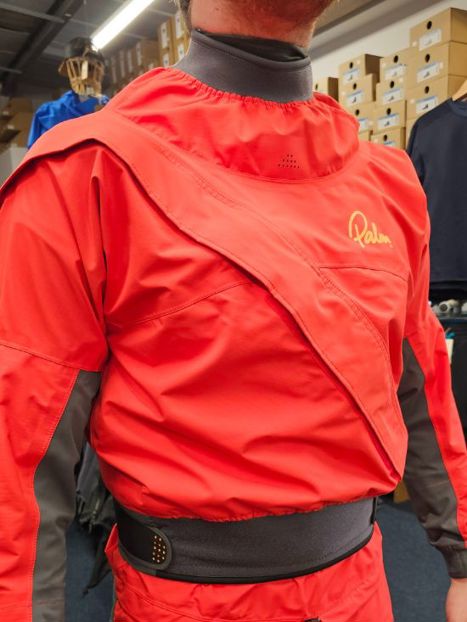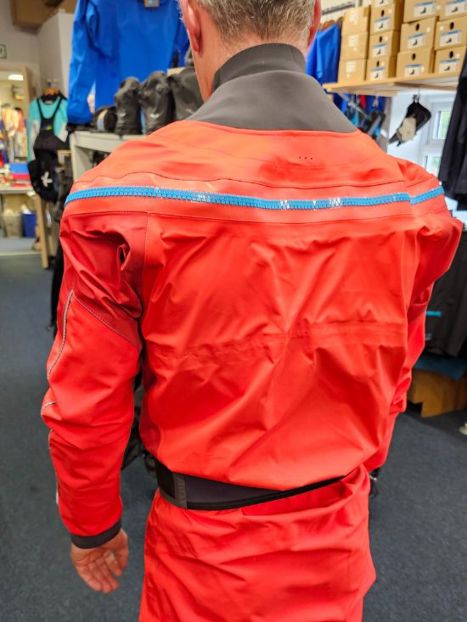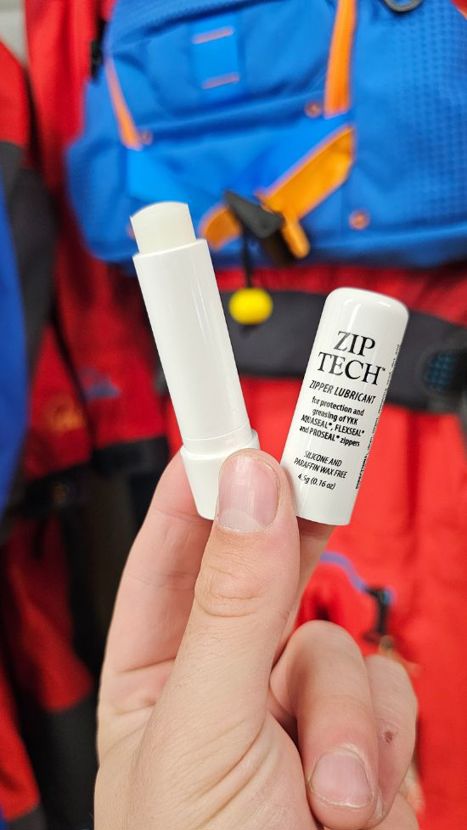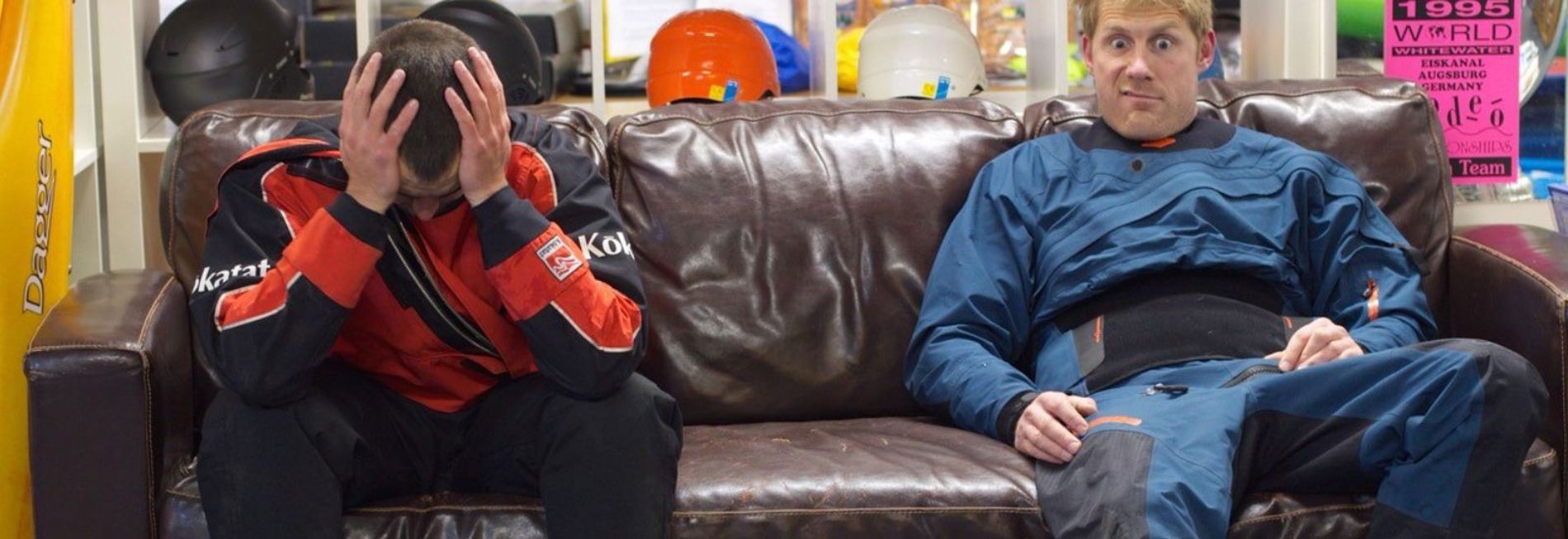
Kayaking is a fantastic Watersport that offers endless opportunities for exploration, adventure, and a way to connect with nature. Pretty much unlike any other sport!
Whether you are paddling through calm rivers or lakes, running whitewater, or exploring the coast and sea, having the right gear is the best way to have a great time on the water.
Most people start paddling in the UK during the warm summer months, however, as your paddling develops you may want to continue to paddle through the cooler winter months too. When this time arrives one of the most important pieces of equipment to consider buying is a dry suit.
In this guide, we are going to talk you through the different options available and what you need to consider before jumping in and making a purchase.
Unlike a wetsuit, which traps a thin layer of water next to your skin and relies on your body heat to warm it up, a dry suit takes a different approach! Its job is to keep the water out. Dry suits are constructed from waterproof materials, creating a robust barrier between you and the cold, watery world outside.
Dry suits feature latex gaskets on the neck, wrists, and ankles. These are the areas where water would typically find its way into clothing, but the gaskets form a water tight seal to prevent this.
Why should you consider a dry suit for Kayaking
As someone who paddles at every opportunity, I can tell you that a dry suit is an incredible piece of gear when it comes to facing a long day spent on and, possibly, in cold and wet conditions. A dry suit is essentially a one-piece suit, designed to keep the wet and cold out and keep the warmth and dry in. It's like your personal shield against the elements, designed to ensure comfort and safety during days on the water.
Dry suits do not offer warmth themselves however; rather, they serve as a waterproof and windproof barrier to protect the insulation garments underneath. The actual source of warmth lies in the thermal garments. This distinction is crucial to understand as it is a common misconception among people looking at dry suits for the first time.
In essence, a dry suit and thermal base layers are a barrier, keeping you warm and dry. Whether it's kayaking, canoeing, paddling a Sit On Top kayak (SOT) or Stand Up Paddle-boarding (SUP), it offers a level of protection and comfort that enhances the whole "on water" experience.
As keen kayaker’s there's nothing we value more than safety and comfort during adventures out on the water, and this is where a dry suit comes into play, especially in colder months or cold water conditions.
The importance of staying dry while kayaking can't be overstated. Hypothermia - a real risk in cold conditions and occurs when your body loses heat faster than it can produce it.
Getting wet accelerates this heat loss, making dryness a key factor in preventing hypothermia.
No matter how skilled you are, there's always a chance you could capsize or fall off your SUP or SOT. In such situations, a dry suit acts as a barrier, keeping you dry and reducing the risk of hypothermia. Even if you don't capsize, water can still splash into your kayak, SOT or SUP. Even minor splashes combined with wind and rain can make for an uncomfortable wet paddle, and again in these conditions a dry suit will ensure that you stay dry and warm, regardless of conditions.
Safety & Comfort
The main purpose of the dry suit is to ensure that your thermal base layers underneath remain dry. By keeping them dry, the insulating layers are able to function properly. Knowing that you’ll stay dry even if you capsize provided’s peace of mind to fully immerse yourself into the days paddling adventure!
Features to consider
Selecting the right dry suit can seem a little daunting at first due to the amount of options now available, here's what we recommend to look out for:
Material
The material of your drysuit plays a significant role in its performance. Most dry suits are crafted from either Gore-Tex or a multi-layered nylon.
Gore-Tex, is a top-end material renowned for its superior waterproof and breathable properties. From my experience, a Gore-Tex drysuit can keep you dry and comfortable even in the harshest of conditions. It's worth mentioning that during physical activity, you can sweat up to 3-4 litres per hour! And that's not great to sit in…
Multilayer Nylon, materials such as Palm's XP range or NRS's Eclipse range (and many more...) are also all fully waterproof and breathable but are just not quite as technical as Gore-Tex, but they are more affordable. The cost of a drysuit is just one of several points you might want to consider when looking at drysuits, the others include:
How much am I going to use this suit?
How long will I be in it for, each time I put it on?
Where am I going to be using it?
Gore-Tex is amazing and if you’re going to be wearing your dry suit for hours on end, day after day after day, it is worth the price tag. For a lot of paddlers going out for a 2,4,5 hour paddle, once or twice a week, a more affordable option will be perfectly adequate.
Reinforcement
High wear areas such as your knees, elbows and bum will take a fair bit of abuse, especially if paddling white water. A good dry suit should always have good reinforcement in these areas to help prolong the lifespan of a suit.
On a dry suit the material it’s manufactured from is obversely important! Just as important are the seals on the neck, wrists, and ankles.
Seals should be tight enough to prevent water from seeping in, but not so tight that they cause discomfort.
Latex seals, in our experience, are the most effective way of sealing and keeping the water out. However, be aware that some people may have allergic reactions to latex! If this is the case, or if you simply can't live with tight latex seals around your neck or wrist the next best option would be dry suits with neoprene seals. Neoprene is very good at keeping water out, not as good at latex, but you do find that it is much easier to get in and out of your suit, which can only be a good thing! Quite often you will find more general purpose drysuits, such as Palm's Fuse suit. This has latex and neoprene wrist seals, but only a neoprene seal around the neck.
Ankle seals - no one likes getting getting wet feet! On a dry suit, the two main ways of keeping the water out, is to either have latex ankle seals, which work really well. The only issue is that the latex is quite fragile and easily broken if your not careful taking your dry suit off after a paddle. The second, and most popular way, is to have a built in dry sock. This will keep all the water out and allows you to wear a good pair of thermal socks, completing your thermal set up!
Zips
Dry suits currently use heavy-duty waterproof zips but go back a few years and most dry suits had heavy, not particularly flexible, brass zips. As technology has developed and more people are taking part in “surface water-sports” the emergence of plastic zips has come about and these are now on par with the old brass zips. These are lighter, provide better movement, and are easier to open and close. Zip position is another consideration. By far, the two most common positions you’ll find zips are:
Shoulder entry - the zip is located on the rear of the suit and runs over the back of the shoulders. This provides an easy entry into the suit and a comfortable feeling when worn. The only negative is that some people do find closing the zip on their own rather tricky.
Chest zips - these are longer and run up and over one shoulder and then diagonally down across the front of your body. These zips make putting the suit on and taking it off super easy. They also allow you to get yourself dressed and undressed a cinch. Some paddlers do say, however, that they are not as comfortable to wear if sitting in a boat and, normally, do have to sit under your spraydeck waist tube, which may be an issue for some.
Fitting
A well fitting suit is important, the suit needs to be large enough/spacious enough so that you can wear your thermal layers and when seated doesn’t pull or feel tight or restrictive. It doesn’t want to be too large, however! A dry suit that is too large will also restrict movement while paddling.
Maintenance
Dry suits are an investment, and a small amount of time rinsing, drying, keeping the zip lubricated and generally maintaining the suit after each paddle will significantly increase it’s lifespan. It is inevitable that at some point your dry suit will start to leak, luckily all good manufactures look after and service their suits, patch pinhole leaks, seal replacement, sock replacement and even zip replacement are all possible.
Dry suits are one of the items I would always recommend coming into the shop to check out. Have a good look at the options and try them on for size, due to the suits being one-piece, you may need to change from your normal separates sizing.
On that note, please do come in and see us, any questions ask away. Happy Shopping!
